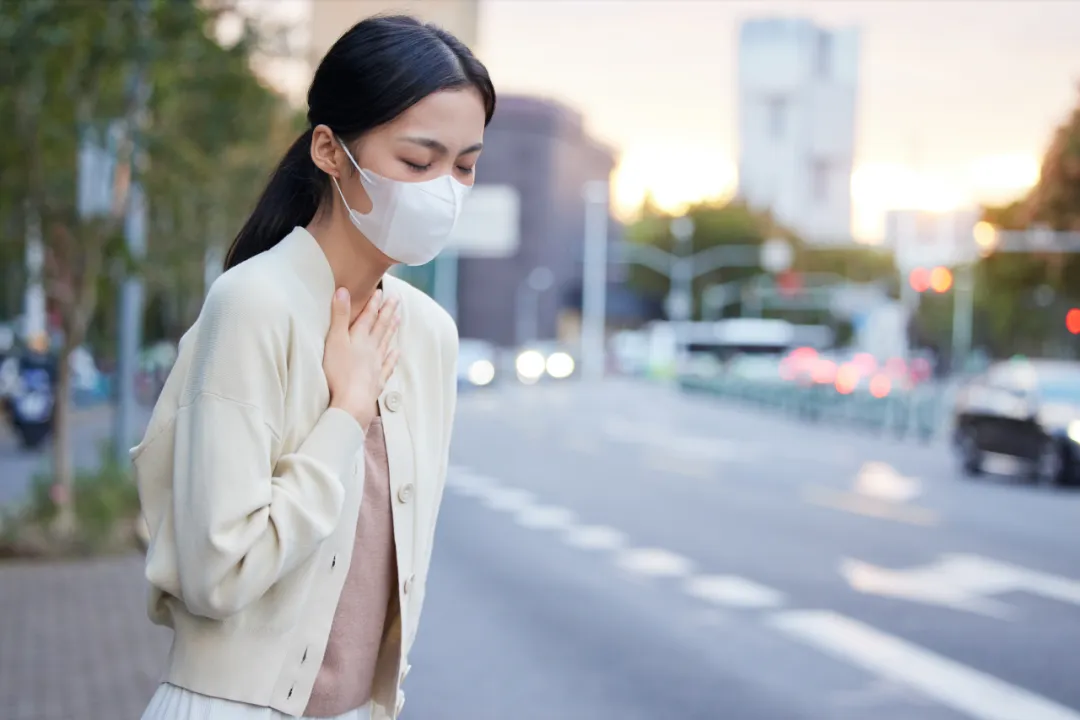A cool autumn breeze sweeps away the stickiness of summer but quietly brings along seasonal “little troubles.”
When your nose starts feeling dry, itchy, and prone to sneezing,
autumn is no longer just about poetic “clear skies and light clouds” — it also brings the challenge of “autumn dryness.”
Why is the nose often the first to sense seasonal changes? And how can we gently take care of it?
Today, let’s explore this rather “sensitive” season together.
01
Dry Autumn Air:
Reducing Moisture, Increasing Discomfort
The inside of our nasal cavity is lined with delicate mucosa, which not only warms and humidifies the dry air we inhale but also relies on a “cleaning system” made of mucus and cilia to trap and remove foreign particles like dust and bacteria. For this system to function efficiently, the mucosa must remain sufficiently moist.
However, “autumn dryness” disrupts this balance. As air humidity drops significantly, dry cold air directly irritates the nasal passages, accelerating moisture evaporation from the mucosa. This leads to dryness, reduced elasticity, and even potential damage.
The result is a series of nasal discomforts:
Dryness and Sensation of Foreign Body: The most direct signal. The nasal cavity loses lubrication, feeling dry and even burning inside.
Crusting: Mucous secretions thicken due to dryness, mixing with shed cells and dust to form dry crusts. These can block the nasal passages, and improper removal may cause mucosal injury and bleeding.
Bleeding: The blood vessels in the nose are fine and shallow. Dryness makes them fragile — a simple rub or forceful nose blow can rupture capillaries and cause bleeding.
02
Autumn:
The “Carnival Season” for Allergens
If “autumn dryness” only brings physical discomfort, the quietly rising allergen levels in autumn can plunge sensitive nasal passages into a full-scale “immune battle.”
This season, the following allergens are particularly active:
Weed Pollen (The Star of Autumn)
Don’t assume pollen is only a spring issue! Autumn is pollination season for many weeds, such as mugwort, hops, and ragweed. Their pollen grains are small and light, traveling far with the wind and lingering longer in dry air, easily entering the nasal passages and triggering strong allergic reactions.
Note: After thunderstorms, pollen grains can rupture into finer allergenic particles due to electrical activity, flooding the lower respiratory tract and triggering “thunderstorm asthma.” Symptoms include severe coughing, wheezing, and even breathing difficulties. Take extra precautions before and after storms by staying indoors.
Dust Mites
Late summer and early autumn’s temperature and humidity are ideal for dust mite reproduction. As the weather cools, people tend to stay indoors more, increasing exposure to dust mites and their droppings, which can trigger allergies.
Mold
Autumn rain, morning dew, and piles of fallen leaves create a breeding ground for mold. Mold spores released into the air can cause allergic symptoms whether inhaled or contacted.
Environmental Irritants
Dry autumn air raises concentrations of airborne particulate matter (like dust). Meanwhile, significant day-night temperature differences cause frequent cold air stimulation, leading to nasal mucosa vasoconstriction and weakened local barrier function, thereby inducing or worsening various sensitivity symptoms.
When these allergens and irritants affect nasal mucosa already weakened by autumn dryness, the immune system’s “overdefense” is triggered, resulting in typical allergy symptoms like sneezing, runny nose, congestion, and nasal itching.

03
Three Key Steps
to a Comfortable Autumn for Your Nose
Understanding the causes leads to clear prevention and care strategies. Focus on three things: moisturizing, avoiding allergens, and scientific protection.
#1
Moisturize:
A “Face Mask” for Your Nose
Use a humidifier to maintain indoor humidity between 40% and 60% — the most effective way to relieve dryness. Don’t forget to drink plenty of warm water for internal hydration.
Use saline nasal spray or rinse daily to flush out allergens, soften crusts, and replenish moisture.
If crusts form, don’t pick at them! First, soften with steam or saline, then clean gently.
For severe dryness or bleeding, consult a doctor about using nasal lubricating gels for an extra protective layer.
#2
Avoid Allergens:
Create a “Low-Allergen” Environment
On high-pollen days (sunny and windy), limit prolonged outdoor activities. Wear a mask outside, and change clothes and rinse your nose after returning home.
Wash bedsheets regularly in hot water and sun-dry them. Minimize carpets and plush toys. Consider using an air purifier.
Ventilate rooms when the weather is fine. Keep bathrooms and kitchens dry to prevent mold growth.
#3
Scientific Protection:
Seek Professional Help When Needed
Those with seasonal allergic rhinitis can start medication 1–2 weeks in advance for more effective symptom control through the season.
If symptoms severely affect daily life, seek medical attention. Nasal corticosteroid sprays, oral antihistamines, etc., can be used safely under a doctor’s guidance.
Do not self-prescribe or long-term use vasoconstrictive nasal sprays, as they can lead to dependency and progress into medication-induced rhinitis.
Autumn should be a comfortable season.
May we all heed the subtle signals from our noses,
care for them gently,
and safeguard every breath of ease,
welcoming a fresh and peaceful autumn.
What little troubles has your nose faced this autumn?
Share with us in the comments,
and we’ll provide professional answers.
